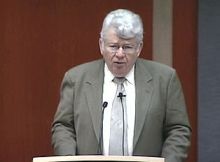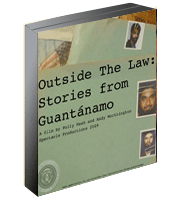Guantánamo and Habeas Corpus: Prisoners Win 3 out of 4 Cases, But Lose 5 out of 6 in Court of Appeals (Part One)
20.7.10
 For the last two years, the prisoners held in the “War on Terror” prison at Guantánamo Bay, Cuba have been challenging the basis of their detention through habeas corpus petitions filed with the District Court in Washington D.C., where they have met with a notable degree of success. Of the 51 cases decided, 37 have been won by the prisoners, a 73 percent success rate that has involved judges casting an objective eye — often for the first time ever — on the statements of the prisoners themselves, on the statements of their fellow prisoners, and on the “mosaic” of intelligence reports that makes up the majority of the government’s evidence. In 3 out of 4 cases, the judges have concluded that the government has been relying on dubious confessions extracted through torture, coercion or bribery, and/or that its “mosaics” are full of holes.
For the last two years, the prisoners held in the “War on Terror” prison at Guantánamo Bay, Cuba have been challenging the basis of their detention through habeas corpus petitions filed with the District Court in Washington D.C., where they have met with a notable degree of success. Of the 51 cases decided, 37 have been won by the prisoners, a 73 percent success rate that has involved judges casting an objective eye — often for the first time ever — on the statements of the prisoners themselves, on the statements of their fellow prisoners, and on the “mosaic” of intelligence reports that makes up the majority of the government’s evidence. In 3 out of 4 cases, the judges have concluded that the government has been relying on dubious confessions extracted through torture, coercion or bribery, and/or that its “mosaics” are full of holes.
These results constitute a comprehensive dismissal of the Bush administration’s claims — still touted today by supporters of Guantánamo — that the prison held “the worst of the worst,” and are all the more remarkable because the threshold for success on the government’s part is so low, requiring Justice Department lawyers merely to establish, by a preponderance of the evidence, that the men in question were involved with al-Qaeda and/or the Taliban.
Even with this success rate, problems remain, because the basis for detention for those prisoners who have lost their habeas petitions — the Authorization for Use of Military Force, passed by Congress the week after the 9/11 attacks — fails to distinguish between a terrorist group (al-Qaeda) and the government of Afghanistan at the time of the US-led invasion of Afghanistan in October 2001 (the Taliban).
This has led, in the cases of the majority of the 14 prisoners who have lost their petitions, to an unjust situation in which soldiers — who should have been held as prisoners of war, protected by the Geneva Conventions — are, instead, being consigned, on an apparently legal basis, to ongoing detention at Guantánamo, a prison designed not for soldiers, but, as mentioned above, for “the worst of the worst” terrorists, involved in the 9/11 attacks and other acts of international terrorism.
In challenging their habeas rulings, the prisoners who have lost their petitions have, in general, found the Court of Appeals in Washington D.C. to be so supportive of executive power that the judges have not only endorsed the denial of habeas, but have also gone further than the government in their interpretation of the scope of the detention powers in the AUMF.
A worrying start: No limit on the President’s war powers
The appeals process took a while to get underway, but, in the cases of the men who lost their petitions, the Circuit Court established a worrying position in January this year, ruling, in the case of Ghaleb al-Bihani, a Yemeni who lost his petition in January 2009, on the basis that he was a cook for Arab forces supporting the Taliban, that it was “mistaken” for al-Bihani’s lawyers to argue that “the war powers granted by the AUMF and other statutes are limited by the international laws of war.”
 In the majority opinion, Judge Janice Rogers Brown, supported by Judge Brett M. Kavanaugh, also described the international laws of war as not “a fixed code,” refused to “quibble over the intricate application of vague treaty provisions and amorphous customary principles,” and concluded that “their lack of controlling legal force and firm definition render their use both inapposite and inadvisable when courts seek to determine the limits of the President’s war powers.”
In the majority opinion, Judge Janice Rogers Brown, supported by Judge Brett M. Kavanaugh, also described the international laws of war as not “a fixed code,” refused to “quibble over the intricate application of vague treaty provisions and amorphous customary principles,” and concluded that “their lack of controlling legal force and firm definition render their use both inapposite and inadvisable when courts seek to determine the limits of the President’s war powers.”
Lawyers for Ghaleb al-Bihani responded to the ruling by calling for en banc review of the appeal (meaning that a full panel of judges must consider it), and took some comfort from the statements of Senior Circuit Judge Stephen F. Williams, the third judge, who concurred with the overall judgment and with part of the majority opinion, but took exception to his colleagues’ conclusion about the scope of the President’s war powers, noting that it was “hard to square with the approach that the Supreme Court took in Hamdi [v. Rumsfeld, a 2004 Supreme Court case regarding Guantánamo that established the government’s right to hold men detained under the AUMF].” Judge Williams quoted Justice Souter, who stated explicitly, “[W]e understand Congress’ grant of authority for the use of ‘necessary and appropriate force’ to include the authority to detain for the duration of the relevant conflict, and our understanding is based on longstanding law-of-war principles.”
Everyone in a position of authority appears to have ignored the significance of Justice Souter’s opinion about “the authority to detain for the duration of the relevant conflict.” To my mind, this echoes the overlooked fact that soldiers should be held as prisoners of war according to the Geneva Conventions, which authorize detention “for the duration of the relevant conflict,” and do not, therefore need replacing with the AUMF.
The government argues against the Circuit Court on Presidential power and the international laws of war
Reassuringly, however, the Circuit Court’s contentious argument about Presidential power and the international laws of war has not been ignored. No decision has yet been made about al-Bihani’s appeal for en banc review of the Circuit Court’s January ruling, but on May 13 the government submitted a brief (PDF), in which, although lawyers opposed en banc review and agreed with the Circuit Court on almost every point in its January opinion, they disagreed with the court’s opinion about Presidential power and the international laws of war.
As the lawyers explained in their brief:
Petitioner cites the panel majority’s statement that the “premise that the war powers granted by the [Authorization for Use of Military Force] and other statutes are limited by the international laws of war is mistaken.” The Government agrees that this broad statement does not properly reflect the state of the law. The Government interprets the detention authority permitted under the AUMF as informed by the laws of war.
The lawyers proceeded to explain that their interpretation was “consistent” with Hamdi, as cited above, “and with longstanding Supreme Court precedent that statutes should be construed as consistent with applicable international law.” The lawyers also pointed out that the government had accepted “its detention authority under the AUMF to be informed by the laws of war” in a court filing on March 13, 2009, in response to a request for clarification from Judge John D. Bates, which I discussed in an article entitled, “Guantánamo: The Nobodies Formerly Known As Enemy Combatants.”
In that filing, the government stated:
The President has the authority to detain persons that the President determines planned, authorized, committed, or aided the terrorist attacks that occurred on September 11, 2001, and persons who harbored those responsible for those attacks. The President also has the authority to detain persons who were part of, or substantially supported, Taliban or al-Qaeda forces or associated forces that are engaged in hostilities against the United States or its coalition partners, including any person who has committed a belligerent act, or has directly supported hostilities, in aid of such enemy armed forces.
The key change implemented by the Obama administration was the requirement that “substantial support” rather than just “support” was necessary for detention, but as this also required judges to ascertain what constituted “substantial support,” there were further developments, in particular a ruling by Judge John D. Bates, in Hamlily v. Obama (PDF), in which he proposed that the “key inquiry” for determining whether an individual has become “part of” one or more of these organizations is “whether the individual functions or participates within or under the command structure of the organization — i.e., whether he receives and executes orders or directions.”
This was not the only definition proposed by individual judges, but it was used in a number of cases, and was unchallenged until, last month, largely unnoticed in the mainstream media, the Court of Appeals delivered four more rulings, and delivered a fifth on July 13. For the most part, the Circuit Court reinforced the District Court’s findings (largely because, in five of the six cases, they were challenges mounted by prisoners who had already lost their habeas petitions), although in one case the court overturned the lower court’s denial of habeas corpus, and in another reversed a prisoner’s successful petition. Behind these blunt figures, however, the court tore into Judge Bates’ definition of the requirements for detention, and, emboldened by this, delivered an even more critical opinion, further undermining the District Court’s authority, in the most recent case decided. Given the number of cases involved in this analysis, I will examine the first two of these rulings in this article, and I will examine the other three in an article next week.
The “gossamer thin” evidence against Adham Ali Awad is upheld
In the first of these appeals, decided on June 2, the Circuit Court upheld the ongoing detention of Adham Ali Awad (PDF), a Yemeni amputee who had been handed over to Afghan forces by al-Qaeda fighters besieged in a hospital in Afghanistan in December 2001. Last August, Judge James Robertson denied Ali Awad’s habeas petition, even though he conceded that the case against him was “gossamer thin,” and added, “The evidence is of a kind fit only for these unique proceedings and has very little weight.” He also described Ali Awad as a “marginally literate” young man, who “has spent more than seven of his twenty-six years — since he was a teenager — in American custody,” and stated, “It seems ludicrous to believe that he poses a security threat now,” adding, limply, “but that is not for me to decide.”
 As I explained at the time, in the hands of another judge, the ruling may well have tipped the other way, as the case was not only “gossamer thin,” but also full of holes. As a result, the Court of Appeals could have given Ali Awad the benefit of the doubt, but this was always unlikely, as the Circuit Court is dominated by deeply Conservative judges. In Ali Awad’s appeal, two of the judges — Chief Judge David B. Sentelle and Judge Merrick B. Garland — had delivered a crucial ruling against the Bush administration in June 2008, in the case of Huzaifa Parhat, one of 17 Uighurs (Muslims from China’s oppressed Xinjiang province) who subsequently won their habeas petitions after the Circuit Court’s withering intervention, but this was something of an exception. Just two months ago, Judge Sentelle led the panel that denied habeas corpus rights to foreign prisoners seized in other countries and rendered to the US prison at Bagram airbase, Afghanistan, reversing a ruling in favor of the prisoners, delivered by Judge Bates last March, and consigning the foreigners in Bagram to a legal black hole that resembles Guantánamo in its early days.
As I explained at the time, in the hands of another judge, the ruling may well have tipped the other way, as the case was not only “gossamer thin,” but also full of holes. As a result, the Court of Appeals could have given Ali Awad the benefit of the doubt, but this was always unlikely, as the Circuit Court is dominated by deeply Conservative judges. In Ali Awad’s appeal, two of the judges — Chief Judge David B. Sentelle and Judge Merrick B. Garland — had delivered a crucial ruling against the Bush administration in June 2008, in the case of Huzaifa Parhat, one of 17 Uighurs (Muslims from China’s oppressed Xinjiang province) who subsequently won their habeas petitions after the Circuit Court’s withering intervention, but this was something of an exception. Just two months ago, Judge Sentelle led the panel that denied habeas corpus rights to foreign prisoners seized in other countries and rendered to the US prison at Bagram airbase, Afghanistan, reversing a ruling in favor of the prisoners, delivered by Judge Bates last March, and consigning the foreigners in Bagram to a legal black hole that resembles Guantánamo in its early days.
In Ali Awad’s appeal, the judges thoroughly endorsed the “gossamer thin” evidence against the Yemeni, and although they did not indulge in the kind of assault on the international laws of war favored by the judges in Ghaleb al-Bihani’s appeal, they did make a point of wading into the debate regarding the extent to which prisoners must be involved in al-Qaeda or the Taliban for their detention to be justified, by refuting Judge Bates’ assertion that evidence of involvement in the organizations’ “command structure” is required, and asserting that it need only be demonstrated that they were “part of” al-Qaeda and/or the Taliban. As JURIST noted, in one of the few commentaries on the ruling, “This statement lowers the threshold for the amount of evidence needed for incarceration.”
The Circuit Court upholds the detention of Sufyian Barhoumi
 On June 22, the Circuit Court upheld the detention of Sufyian Barhoumi (PDF), an Algerian who lost his habeas petition last September. Although the recently established precedent of being “part of” al-Qaeda surfaced in the Circuit Court’s ruling, it was debatable whether it was strictly necessary in Barhoumi’s case, because he had conceded, in publicly available documents from Guantánamo, that he had attended military training camps in Afghanistan. This, on its own, may not have been sufficient for his detention to be upheld, but the panel, led by Judge David S. Tatel (who had been on the panel that denied habeas rights to foreigners in Bagram) was also swayed by the fact that he was seized in a house raid in Faisalabad, Pakistan on March 28, 2002, that led to the capture of the supposed “high-value detainee” Abu Zubaydah, along with other alleged terror suspects.
On June 22, the Circuit Court upheld the detention of Sufyian Barhoumi (PDF), an Algerian who lost his habeas petition last September. Although the recently established precedent of being “part of” al-Qaeda surfaced in the Circuit Court’s ruling, it was debatable whether it was strictly necessary in Barhoumi’s case, because he had conceded, in publicly available documents from Guantánamo, that he had attended military training camps in Afghanistan. This, on its own, may not have been sufficient for his detention to be upheld, but the panel, led by Judge David S. Tatel (who had been on the panel that denied habeas rights to foreigners in Bagram) was also swayed by the fact that he was seized in a house raid in Faisalabad, Pakistan on March 28, 2002, that led to the capture of the supposed “high-value detainee” Abu Zubaydah, along with other alleged terror suspects.
Alarmingly, the judges were unconcerned by the copious amount of evidence that has emerged in recent years to demonstrate that Zubaydah — for whom the CIA’s torture program was first conceived — was not, as alleged, a high-ranking member of al-Qaeda involved in numerous international terrorist plots, but was, instead, the mentally damaged gatekeeper for a training camp that had little connection to al-Qaeda at all. As a result, the Circuit Court’s ruling not only shows a fundamental disdain for any kind of historical accuracy, but also demonstrates a general unwillingness on the part of the Circuit Court to challenge or probe prosecutorial positions regarding the Guantánamo prisoners.
In next week’s article, I will begin by examining an exception to this rule, but that was very much a one-off, because the Circuit Court’s most recent rulings have demonstrated a further commitment to eroding the District Court’s independence — and, for the most part, its fairness and impartiality — with increasingly aggressive assertions that have less to do with due process than with a kind of overreaching, authoritarian, right-wing ideology.
With the retirement of Justice John Paul Stevens from the Supreme Court, this is deeply troubling, as it means that, in all probability, the Supreme Court has lost its ability to challenge dubious decisions on Guantánamo, and the Circuit Court is left running the show. As a result, anyone concerned about justice for the Guantánamo prisoners, as the ninth anniversary of the 9/11 attacks approaches, should be very worried indeed.
 Andy Worthington is the author of The Guantánamo Files: The Stories of the 774 Detainees in America’s Illegal Prison (published by Pluto Press, distributed by Macmillan in the US, and available from Amazon — click on the following for the US and the UK) and of two other books: Stonehenge: Celebration and Subversion and The Battle of the Beanfield. To receive new articles in your inbox, please subscribe to my RSS feed (and I can also be found on Facebook and Twitter). Also see my definitive Guantánamo prisoner list, updated in July 2010, details about the new documentary film, “Outside the Law: Stories from Guantánamo” (co-directed by Polly Nash and Andy Worthington, currently on tour in the UK, and available on DVD here), and my definitive Guantánamo habeas list, and, if you appreciate my work, feel free to make a donation.
Andy Worthington is the author of The Guantánamo Files: The Stories of the 774 Detainees in America’s Illegal Prison (published by Pluto Press, distributed by Macmillan in the US, and available from Amazon — click on the following for the US and the UK) and of two other books: Stonehenge: Celebration and Subversion and The Battle of the Beanfield. To receive new articles in your inbox, please subscribe to my RSS feed (and I can also be found on Facebook and Twitter). Also see my definitive Guantánamo prisoner list, updated in July 2010, details about the new documentary film, “Outside the Law: Stories from Guantánamo” (co-directed by Polly Nash and Andy Worthington, currently on tour in the UK, and available on DVD here), and my definitive Guantánamo habeas list, and, if you appreciate my work, feel free to make a donation.
As published exclusively on the website of the Future of Freedom Foundation, as, “Guantánamo and Habeas Corpus: Wins and Losses, Part 1.”
For an overview of all the habeas rulings, including links to all my articles, and to the judges’ unclassified opinions, see: Guantánamo Habeas Results: The Definitive List. For a sequence of articles dealing with the Guantánamo habeas cases, see: Guantánamo and the Supreme Court: the most important habeas corpus case in modern history and Guantánamo and the Supreme Court: What Happened? (both December 2007), The Supreme Court’s Guantánamo ruling: what does it mean? (June 2008), Guantánamo as Alice in Wonderland (Uighurs’ first court victory, June 2008), What’s Happening with the Guantánamo cases? (July 2008), Government Says Six Years Is Not Long Enough To Prepare Evidence (September 2008), From Guantánamo to the United States: The Story of the Wrongly Imprisoned Uighurs (October 2008), Guantánamo Uyghurs’ resettlement prospects skewered by Justice Department lies (October 2008), Guilt By Torture: Binyam Mohamed’s Transatlantic Quest for Justice (November 2008), After 7 Years, Judge Orders Release of Guantánamo Kidnap Victims (November 2008), Is Robert Gates Guilty of Perjury in Guantánamo Torture Case? (December 2008), A New Year Message to Barack Obama: Free the Guantánamo Uighurs (January 2009), The Top Ten Judges of 2008 (January 2009), No End in Sight for the “Enemy Combatants” of Guantánamo (January 2009), Judge Orders Release of Guantánamo’s Forgotten Child (January 2009), How Cooking For The Taliban Gets You Life In Guantánamo (January 2009), Lies, Damned Lies and Statistics (February 2009), Bad News And Good News For The Guantánamo Uighurs (February 2009), The Nobodies Formerly Known As Enemy Combatants (March 2009), Farce at Guantánamo, as cleared prisoner’s habeas petition is denied (April 2009), Obama’s First 100 Days: A Start On Guantánamo, But Not Enough (May 2009), Judge Condemns “Mosaic” Of Guantánamo Intelligence, And Unreliable Witnesses (May 2009), Pain At Guantánamo And Paralysis In Government (May 2009), Guantánamo: A Prison Built On Lies (May 2009), Free The Guantánamo Uighurs! (May 2009), Guantánamo And The Courts (Part One): Exposing The Bush Administration’s Lies (July 2009), Obama’s Failure To Deliver Justice To The Last Tajik In Guantánamo (July 2009), Obama And The Deadline For Closing Guantánamo: It’s Worse Than You Think (July 2009), How Judge Huvelle Humiliated The Government In Guantánamo Case (Mohamed Jawad, July 2009), As Judge Orders Release Of Tortured Guantánamo Prisoner, Government Refuses To Concede Defeat (Mohamed Jawad, July 2009), Guantánamo As Hotel California: You Can Check Out Any Time You Like, But You Can Never Leave (August 2009), Judge Orders Release From Guantánamo Of Kuwaiti Charity Worker (August 2009), Guantánamo And The Courts (Part Two): Obama’s Shame (August 2009), Guantánamo And The Courts (Part Three): Obama’s Continuing Shame (August 2009), No Escape From Guantánamo: The Latest Habeas Rulings (September 2009), First Guantánamo Prisoner To Lose Habeas Hearing Appeals Ruling (September 2009), A Truly Shocking Guantánamo Story: Judge Confirms That An Innocent Man Was Tortured To Make False Confessions (September 2009), 75 Guantánamo Prisoners Cleared For Release; 31 Could Leave Today (September 2009), Resisting Injustice In Guantánamo: The Story Of Fayiz Al-Kandari (October 2009), Justice Department Pointlessly Gags Guantánamo Lawyer (November 2009), Judge Orders Release Of Algerian From Guantánamo (But He’s Not Going Anywhere) (November 2009), Innocent Guantánamo Torture Victim Fouad al-Rabiah Is Released In Kuwait (December 2009), What Does It Take To Get Out Of Obama’s Guantánamo? (December 2009), “Model Prisoner” at Guantánamo, Tortured in the “Dark Prison,” Loses Habeas Corpus Petition (December 2009), Judge Orders Release From Guantánamo Of Unwilling Yemeni Recruit (December 2009), Serious Problems With Obama’s Plan To Move Guantánamo To Illinois (December 2009), Appeals Court Extends President’s Wartime Powers, Limits Guantánamo Prisoners’ Rights (January 2010), Fear and Paranoia as Guantánamo Marks its Eighth Anniversary (January 2010), Rubbing Salt in Guantánamo’s Wounds: Task Force Announces Indefinite Detention (January 2010), The Black Hole of Guantánamo (March 2010), Guantánamo Uighurs Back in Legal Limbo (March 2010), Guantánamo and Habeas Corpus: The Torture Victim and the Taliban Recruit (April 2010), An Insignificant Yemeni at Guantánamo Loses His Habeas Petition (April 2010), With Regrets, Judge Allows Indefinite Detention at Guantánamo of a Medic (April 2010), Mohamedou Ould Salahi: How a Judge Demolished the US Government’s Al-Qaeda Claims (April 2010), Judge Rules Yemeni’s Detention at Guantánamo Based Solely on Torture (April 2010), Why Judges Can’t Free Torture Victims from Guantánamo (April 2010), How Binyam Mohamed’s Torture Was Revealed in a US Court (May 2010), Guantánamo and Habeas Corpus: Consigning Soldiers to Oblivion (May 2010), Judge Denies Habeas Petition of an Ill and Abused Libyan in Guantánamo (May 2010), Judge Orders Release from Guantánamo of Russian Caught in Abu Zubaydah’s Web (May 2010), No Escape from Guantánamo: Uighurs Lose Again in US Court (June 2010), Does Obama Really Know or Care About Who Is at Guantánamo? (June 2010), Guantánamo and Habeas Corpus: 2 Years, 50 Cases, 36 Victories for the Prisoners (June 2010), Obama Thinks About Releasing Innocent Yemenis from Guantánamo (June 2010), Calling for US Accountability on the International Day in Support of Victims of Torture (June 2010), Judge Orders Release from Guantánamo of Yemeni Seized in Iran, Held in Secret CIA Prisons (July 2010), Innocent Student Finally Released from Guantánamo (July 2010).












 Who's still at Guantánamo?
Who's still at Guantánamo?

5 Responses
Tweets that mention Guantánamo and Habeas Corpus: Prisoners Win 3 out of 4 Cases, But Lose 5 out of 6 in Court of Appeals (Part One) | Andy Worthington -- Topsy.com says...
[…] This post was mentioned on Twitter by Andy Worthington, ZIGGYMAN. ZIGGYMAN said: Guantánamo and Habeas Corpus: Prisoners Win 3 out of 4 Cases, But …: Rumsfeld, a 2004 Supreme Court case regardi… http://bit.ly/9ZZThH […]
...on July 20th, 2010 at 2:08 pm
Shining City on a Hill Casting a Shadow Over Blood « Little Alex in Wonderland says...
[…] a priority“, where detainees kidnapped from around the world by the U.S. government continue to fight in court to force their accusers to present the evidence against them. These battles are lotteries because of this “terrorist” distinction that […]
...on July 21st, 2010 at 5:31 pm
Prisoner Describes Peaceful Protest in Guantánamo on the Anniversary of Obama’s Failure to Close the Prison as Promised « Eurasia Review says...
[…] claims of authority — has raised the burden on detained men seeking relief through the courts to levels even higher than the government has […]
...on January 22nd, 2011 at 5:44 pm
Habeas Hell: How The Great Writ Was Gutted At Guantánamo « Eurasia Review says...
[…] was also too much for the Obama administration, which noted in a brief that “The Government interprets the detention authority permitted under the AUMF as informed by […]
...on February 25th, 2011 at 1:48 pm
Guantánamo: Mocking the Law | Amauta says...
[…] success for the government’s appeals in the habeas legislation, as I explained in my articles, Guantánamo and Habeas Corpus: Prisoners Win 3 out of 4 Cases, But Lose 5 out of 6 in Court of Appea…, Guantánamo and Habeas Corpus: Prisoners Win 3 out of 4 Cases, But Lose 5 out of 6 in Court of […]
...on April 1st, 2011 at 9:19 pm